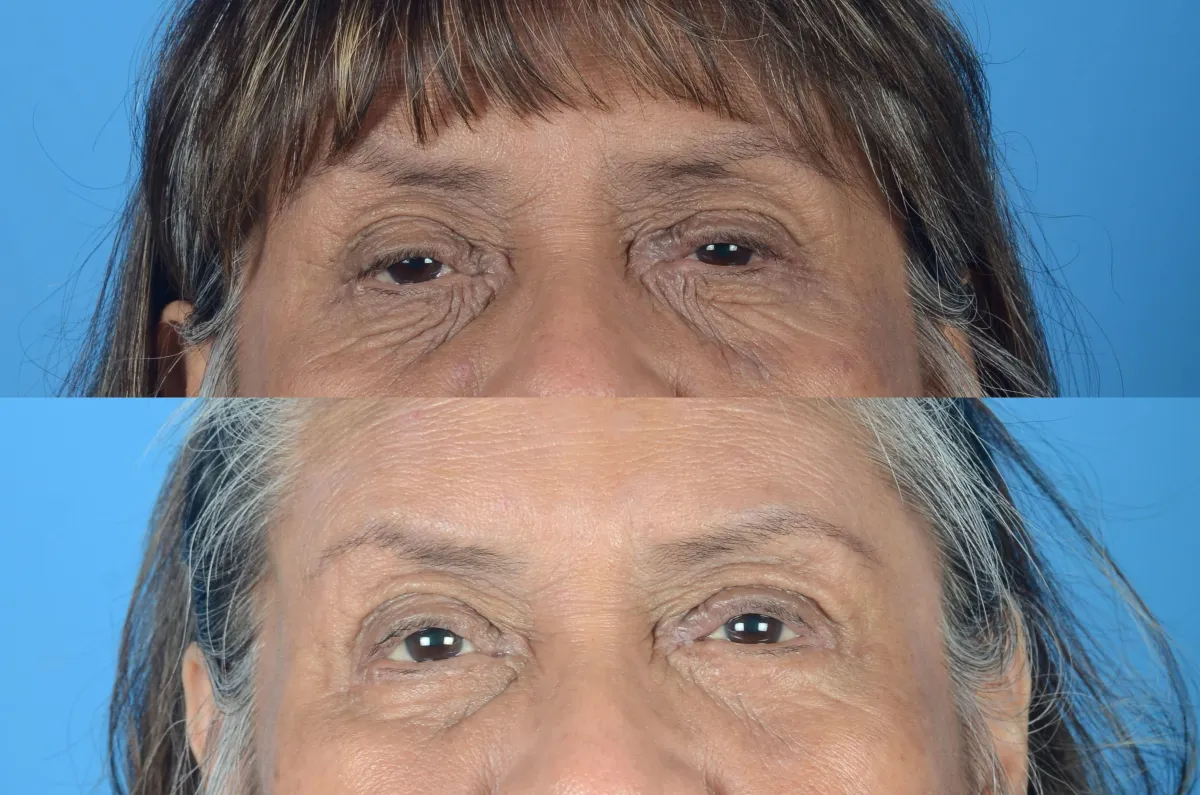
info@elizabeth-md.com
(505) 855-5500
Eyes
Eyes

Blepharoplasty is the technical term for what is commonly referred to as eyelid lift surgery. Blepharoplasty can be performed on the upper eyelids (upper blepharoplasty), the lower eyelids (lower blepharoplasty), or both (four lid surgery). Upper blepharoplasty can be performed in the clinic under light sedation. Most upper blepharoplasty procedures involve straightforward removal of excess upper eyelid skin, occasionally with some removal of fat if needed. Lower blepharoplasty is a complex surgery involving more than just eyelid skin. It requires special repositioning of the delicate structures surrounding your eye, including fat, ligaments, and muscles. Therefore, it is performed in the operating room under anesthesia as an outpatient procedure, meaning you will return home the same day. Stitches (sutures) are used to close incisions on the eyelids and stay in place for 4 to 5 days, then they are removed in the clinic. Upper blepharoplasty incisions are placed in the natural crease of the upper eyelid. Careful measurements are taken to ensure that the correct amount of eyelid skin is removed, so as to obtain a beautiful outcome but aLeo avoid difficulty closing the eyelids completely (lagophthalmos).
Lower blepharoplasty incisions are placed on the inside of the lower eyelid. This technique is referred to as a transconjunctival lower blepharoplasty, and it is used to minimize pulling down of the lower eyelids over time (ectropion). These inside sutures are absorbed by the body and not removed. This incision is for the portion of the lower blepharoplasty procedure that addresses the bags and hollowed circles under the eyes. It involves moving the fat that is creating the bags under the eye and lifting the tissues of the cheek to both flatten the bags and to conceal the circles (orbital fat transposition). If extra skin of the lower eyelid is also removed, it is done so very conservatively to avoid ectropion, by removing a small amount of skin just under the lower eyelashes. This technique is referred to as a subciliary skin pinch excision.
Most patients find that they require about a week of downtime for an upper eyelid surgery, and about two weeks of downtime for a lower eyelid surgery. Common side effects include significant bruising, swelling of the eyelid(s) and tissues of the eye, mild to moderate pain, eye dryness or excessive tearing, temporary blurriness of the vision, sensitivity to light, and fatigue of the eyes. Swelling can persist for up to 6 to 8 weeks in some cases. At home, you will lightly ice your incisions and eyes, apply prescribed ointment to the incisions, and you will use artificial tears frequently to moisturize the eyes. You will avoid driving until you are able to tolerate sunlight and move your eyes without fatigue or discomfort. The incisions may remain somewhat pink (or darker than surrounding skin in darker skinned individuals) for up to six months, but become nearly invisible by 1 year to 18 months. To prevent the incisions from darkening and remaining visible permanently, it is absolutely crucial to protect this skin from the sun for a full 12 months after surgery. This means using SPF 50 or above, and whenever possible, hat and/or sunglasses while outside.
Contact our Blepharoplasty Specialist in Albuquerque, NM
Dr. Elizabeth will take the time to thoroughly understand your needs and concerns to determine if you are a good candidate for a blepharoplasty procedure.
Upper Blepharoplasty Before & After Photos


Lower Blepharoplasty Before & After Photos


GET DIRECTIONS
☀︎ 4100 Wolcott Ave NE Suite AAlbuquerque , NM 87109
✆ (505) 587-8742
OFFICE HOURS
Monday – Thursday : 9AM – 4PM
Friday : 9AM – 12PM
Saturday & Sunday : Closed
Copyright © 2025 Elizabeth MD Facial Plastic Surgery, All rights reserved.